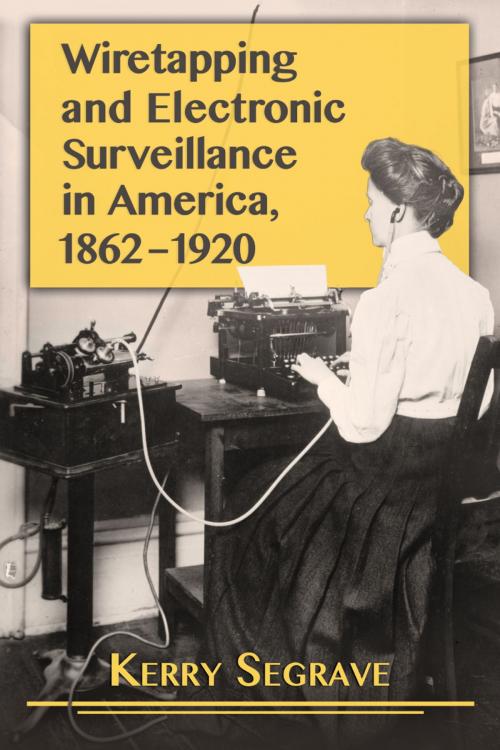Wiretapping and Electronic Surveillance in America, 1862-1920
Nonfiction, History, Americas, United States, Social & Cultural Studies, Social Science| Author: | Kerry Segrave | ISBN: | 9781476617404 |
| Publisher: | McFarland & Company, Inc., Publishers | Publication: | September 6, 2014 |
| Imprint: | Language: | English |
| Author: | Kerry Segrave |
| ISBN: | 9781476617404 |
| Publisher: | McFarland & Company, Inc., Publishers |
| Publication: | September 6, 2014 |
| Imprint: | |
| Language: | English |
Following the 2013 revelations of Edward Snowden, Americans have come to realize that many of us may be under surveillance at any time. It all started 150 years ago on the battlefields of the Civil War, where each side tapped the other’s telegraph lines. It continued in 1895, when the New York Police Department began to tap telephone lines. It was 20 years before it was public knowledge, and by then the NYPD was so busy tapping they had a separate room set aside for the purpose. Wiretapping really took off in 1910, when the dictograph—the first ready-to-use bug that anyone could operate—arrived, making it easier still to engage in electronic surveillance. Politicians bugged other politicians, corporations bugged labor unions, stockbrokers bugged other stockbrokers, and the police bugged everybody. And we were well on our way to the future that George Orwell envisioned, the world Edward Snowden revealed: Big Brother had arrived.
Following the 2013 revelations of Edward Snowden, Americans have come to realize that many of us may be under surveillance at any time. It all started 150 years ago on the battlefields of the Civil War, where each side tapped the other’s telegraph lines. It continued in 1895, when the New York Police Department began to tap telephone lines. It was 20 years before it was public knowledge, and by then the NYPD was so busy tapping they had a separate room set aside for the purpose. Wiretapping really took off in 1910, when the dictograph—the first ready-to-use bug that anyone could operate—arrived, making it easier still to engage in electronic surveillance. Politicians bugged other politicians, corporations bugged labor unions, stockbrokers bugged other stockbrokers, and the police bugged everybody. And we were well on our way to the future that George Orwell envisioned, the world Edward Snowden revealed: Big Brother had arrived.















